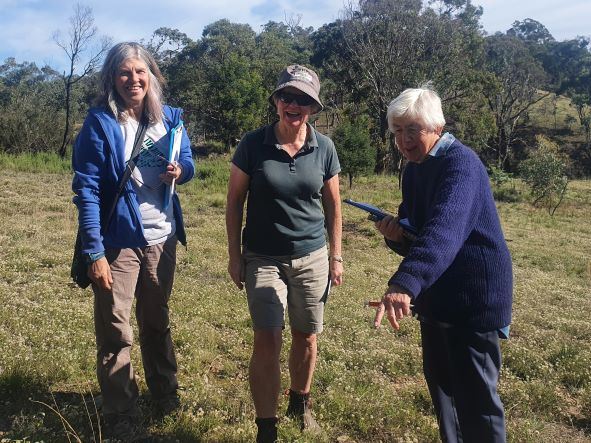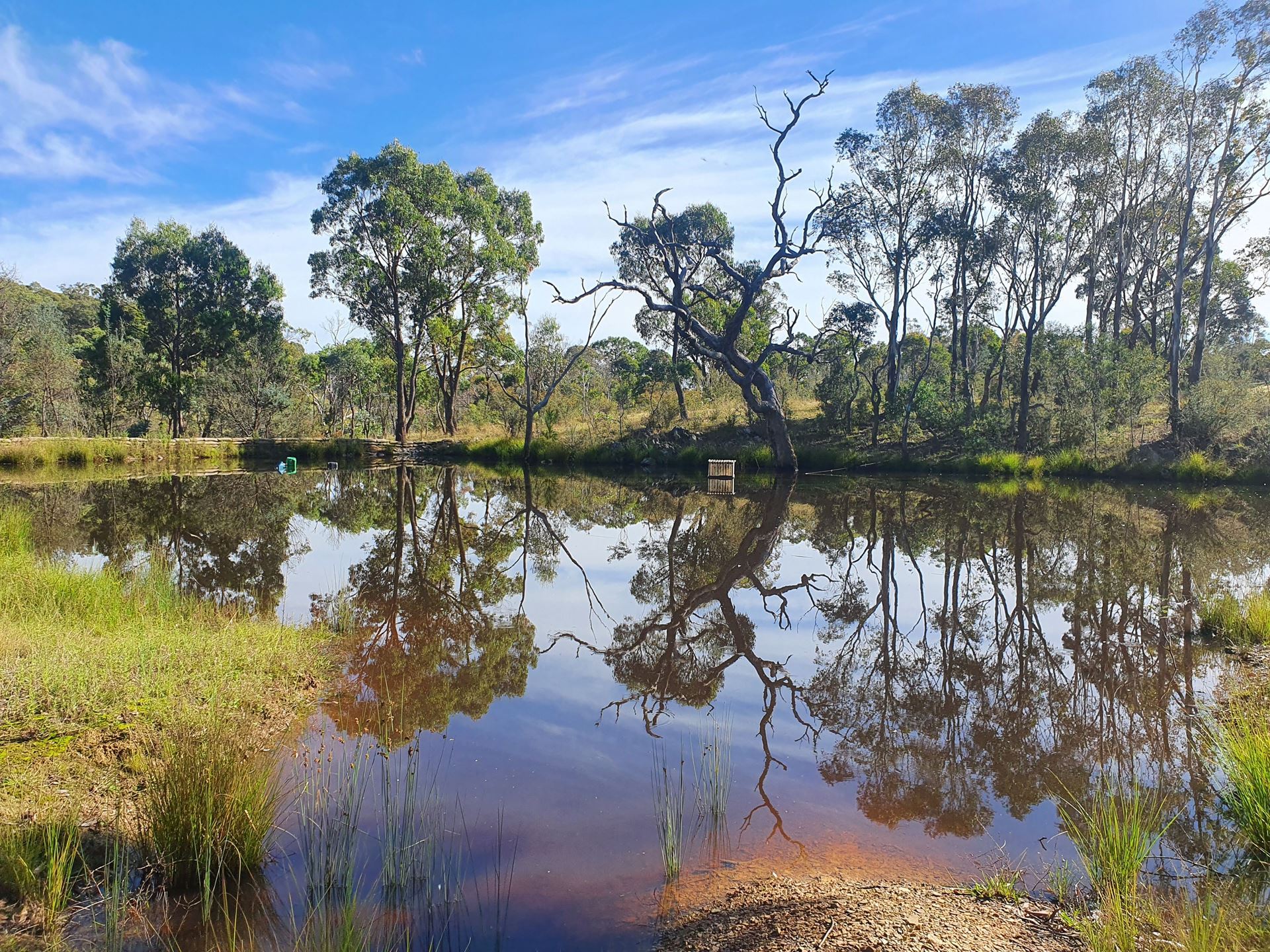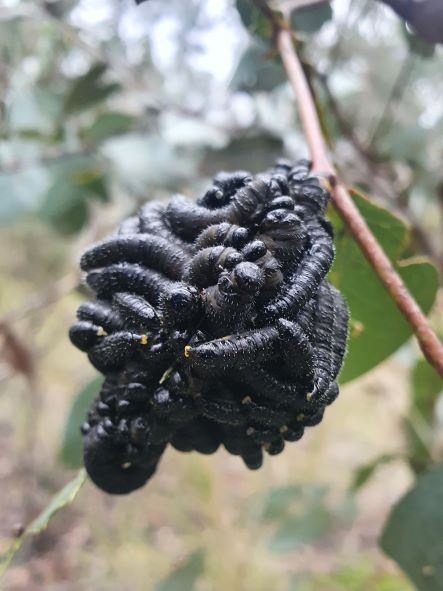The Small Farms Network Capital Region was a Land for Wildlife Provider from June 2017 to April 2021. During that time we facilitated the assessment of 64 properties in the Palerang District. Our intrepid Land for Wildlife assessors were Kris Nash and Jo Walker who bought years of experience along with encyclopaedic knowledge of plants and natural resource management (NRM) to the program. They used this experience to provide landholders with advice and education about the plants and animals on their properties.
The Land for Wildlife Program is a free, non-binding program for landholders. Under the program, property owners receive a free visit from a NRM specialist and a report about the plants and animals living on their property.
Jo and Kris reflect below on their experience being Land for Wildlife assessors for the Small Farms Network Capital Region and the former Palerang Action Network for Sustainability.

Most people are surprised to learn the diversity they have on their farm
It was fascinating to discover the variety of landscapes existing in the area we covered, ranging from tall forests to grassy open expanses and including rocky outcrops of shale or granite, creeks, gullies and dams. Identifying plants involved peering into the high branches of eucalypts, crawling through shrubbery and kneeling to get a close look at Sundews and other tiny plants.
Sometimes we came across threatened ecological communities (grassy box woodland, grasslands) and uncommon or threatened plant species but otherwise we encountered everything from dense to open forest, patches with an intact and diverse native understorey, to low diversity paddocks with a few remnant eucalypts.

There were a few surprises too. I think the most memorable was an understorey of purple-flowering Comesperma ericinum (Heath Milkwort) in an area of dry forest in Wamboin. This species is not common in this area and usually occurs as an individual plant or in small groups.
The average number of plants per property was 60 species (112 from one property), with 316 different native plants recorded across the assessment area. Many more species would have been recorded had it been possible to visit everyone during spring, but most property owners were pleasantly surprised at the number of native plants on their block. All properties had at least 0.5 ha of native vegetation, most had far more.
Weeds, wildlife habitat and wombats
The most common issue discussed was the identification and control of weeds including woody weeds, sifton bush, pine trees, various noxious grasses, pesky annuals and garden escapees. Other issues included erosion control, the enhancement of dams, protecting native seed stock from grazing animals, rehabilitation, salinity control and feral animal management.
We encountered goannas, baby kangaroos and wombats, threatened birds and frogs, scats, scratchings, nests and diggings of many animals, and sadly a bunch of sugar glider tails.

So how can we improve our land?
Our main advice to property owners was to weed, weed, weed and more weeding. We know this is easier said than done but removing pressure from weedy plants will provide more room for native grassland and bush to recover. Other common advice included keeping as much exposed or disturbed soil covered as possible, 80% at least, through mulching, laying heavy logs, branches and/or rocks. Planting additional plants is not usually necessary when the understorey is diverse and there is regeneration of overstory species. That ‘mess’ is great for biodiversity and should be valued. The other major goal should be to retain and protect remnant trees for their all-important hollows for nesting birds and animals.
Great people and a few eccentrics too
It was also interesting to talk to the people who had invited us onto their land for the assessments. They were as diverse as the plants, but all had a deep desire to do something for the environment and the local wildlife. Several of them were wildlife rescuers and carers. The pig purchased as a ‘mini’ but now grown to an enormous stature deserves a mention, as does the lengths people have gone to, to provide homes and habitat for the animals sharing their properties. They were all very keen to know what plants were on their land and their relationship with the local wildlife, and were sometimes amazed by the number of native plants on the lists. To help them understand which plants were listed, we provided them with some information and a follow up email.

Altogether, it was a rewarding experience for us to be able to provide enthusiastic landholders with more knowledge of their farm. It was a privilege to be part of the Land for Wildlife program and humbling to meet such dedicated and caring people. It was a personal highlight to assist landholders discover just how diverse and valuable for wildlife their individual properties were.
Individual land holders and the broader community has benefited from Jo and Kris’s expertise and enthusiasm for helping others to learn about the natural environment. Vicki, one of the landholders, had this to say about the assessment done by Jo and Kris.
‘I found the whole Land for Wildlife experience very positive and learnt a lot about the plants growing here. It was great to know we had such diversity on our farm. The visit from Jo and Kris helped us appreciate the value of the habitat that we have on our farm. Rather than thinking we have a paddock of rocky outcrops we now see a paddock with great habitat potential. Being given a list of species was the icing on the cake. The assessment has encouraged me to focus more on weed removal instead of re-vegetation. Over-all our visit from Jo and Kris was a very enlightening and positive experience from extremely knowledgeable and committed people.’
Thanks for the funding and support
The Small Farms Network Land for Wildlife Program would not have been possible without the support of the Geary’s Gap/Wamboin Landcare Group., National Landcare Program and John Asquith from the Community Environment Centre.
Here is a message from Geary’s Gap Landcare.
Gearys Gap/Wamboin Landcare Group has been very pleased to have been able to support LfW in this region over the past decade. The activities of Landcare and Land for Wildlife are complementary and each makes a valuable contribution to the natural environment of this region. The excellent collaborative work of the two organisations has been exemplary.
Thanks to Jo and Kris for a wonderful contribution and to all our supporters.
For more information on the Land for Wildlife program please contact the Community Environment Centre.